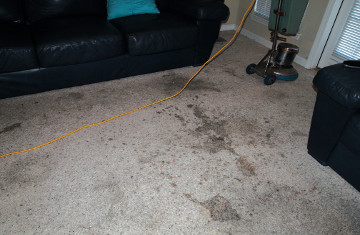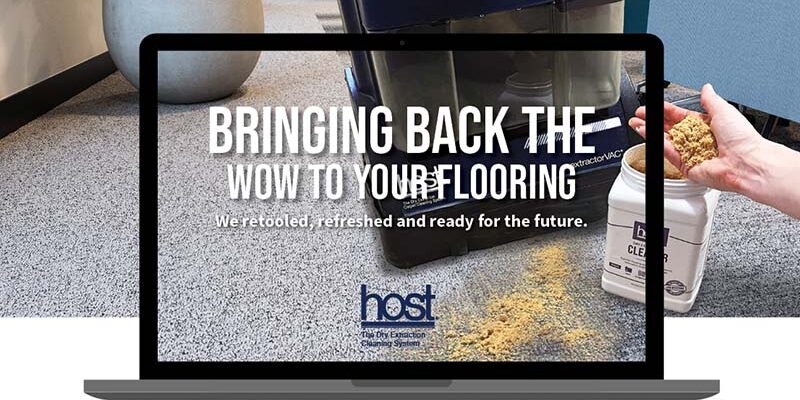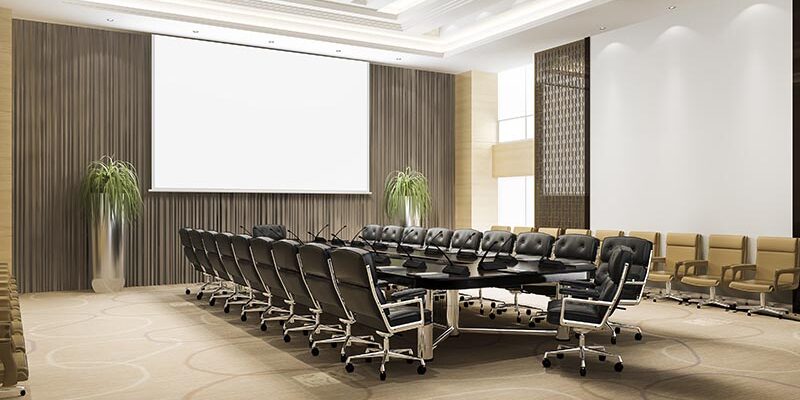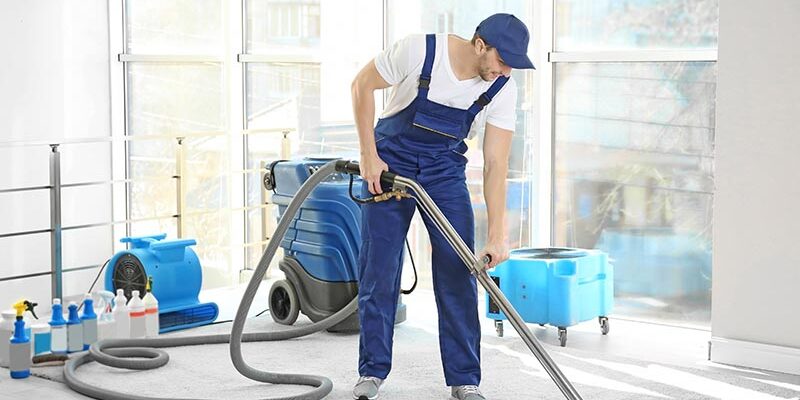The Resoiling Dilemma

The following information presents a new theoretical approach to understanding detergency and resoiling, based upon the topics of “polarities” and “states of matter.”
This approach is very different from the conventional approach of others, in that much of the field data comes from leading chemists who are actively involved in detergent research.
The goal here is to explain a breakthrough in solving the resoiling dilemma.
Rapid resoiling
It iscommon knowledge of cleaners and consumers that soapy and/or sticky residues left in carpet will lead to rapid resoiling, and there are a number of common methods cleaners can use to correct this condition.
However, there is often a “mystery” rapid resoiling occurrence in some carpet, which cannot always be corrected with conventional methods. Some suspect this lack of success is not entirely inherent in the cleaning products or processes, but rather a result of the characteristics of the various fibers.
If we could reduce or eliminate resoiling altogether, carpet cleaning companies would have fewer callbacks and will see more profit for their efforts. There would also be a much higher level of customer satisfaction.
So analyze and apply the following information as much as you can, and see if this new knowledge and data helps with your own resoiling dilemma.
Sticky components of detergents
The first question is: What is “stickiness?” For most cleaning technicians, the answer is self-evident. A technical definition would be “asubstance which has a stronger adhesion to other materials than it does to itself.”
So the big question is: What is “sticky” in a detergent?
Detergents are primarily made of two components: Surfactants and alkaline salts, and that is why the two are associated with each other. The surfactants can generally be sticky, and while some associate stickiness with the alkalinity, that is not the case — most of the time. Some detergents may contain ingredients that are intended to counteract sticky residues.
Here is a new theory to consider:
Rinsing a carpet with just an acid does not necessarily remove a sticky residue, and not addressing the alkalinity could lead to a color loss problem for nylon or wool. Therefore, several detergent manufacturers have made rinses that address both the sticky residue and the alkalinity. This is a good conventional approach that will work as long as the sticky stuff is on, or adsorbed onto the fiber’s surface.
If the sticky substances are in, or absorbed into the fiber, it will not work. The evidence of this is that surfactants are surface active agents and solvents that penetrate or absorb into fibers. That is why a dry solvent can be necessary to remove many oily stains.
What are the differences between the terms adsorb and absorb?
Adsorption and Absorption
These two words differ by one letter and many confuse them.
- “Adsorption” is the adding of substances to the surface of a fiber and is primarily a function of surface area. Surface area is primarily a function of denier; a denier is the size of a filament. Generally, the smaller the denier, the softer the hand or feel and the greater the surface area.
- “Absorption” is the infusing of substances inside the fiber. When a substance penetrates inside the fiber, it is primarily based upon polarity.
|
Adsorption |
Absorption |
|
1. Adding to surface |
1. Infusing inside |
|
2. Based upon surface area |
2 Based upon polarity |
Polarity
Every substance is either “polar” or “non-polar” — or somewhere in between. Substances that are polar will have a decisive “plus” and “minus” (+/-) charge on the ends of its molecule, whereas non-polar substances have only momentary charges.
1. When liquids are polar, we say they are “wet.”
2. When insoluble solids are polar, we say they are hydrophilic, which means “water loving.”
3. When liquids are non-polar, we say they are “dry solvents.”
4. When insoluble solids are non-polar, we say they are oleophilic, which means “oil loving.”
|
|
POLAR |
NONPOLAR |
|
Liquid |
Wet Solvent: (water), dissolves polars (salt) |
Dry Solvent: Dissolve soil or sticky substances |
|
Solid Insoluble |
Hydrophilic: Absorbswater |
Oleophilic:Absorbs oil or sticky substances |
- This means hydrophilic insoluble solids absorb wet liquids. An example is cotton absorbing water. When cotton absorbs water, the water eventually dissipates, because water is volatile (it evaporates).
- Oleophilic insoluble solids absorb oily liquids. If these nonpolar liquids do not evaporate, then they will make oleophilic insoluble solids sticky. An example is like when polyester absorbs oil.
- When a substance is hydrophilic, it generally means it is oleophobic, “oil hating.”
- If it is oleophilic, then it will likely be hydrophobic, which means “water hating.”
This is why water and oil do not mix.
When substances are polar, either the positive side or the negative side will dominate the substance. Laws of science state that polar opposites are attracted to each other and like-kinds are repelled by each other. For cleaning, polarity applies to both surfactants and fibers.
Surfactant polarity
For surfactants, if the hydrophilic (water-loving) side is negative, then the surfactants are called an anionic (-); but it is the cationic (+) end that is the “business” side involved with insoluble substances. If it is positive, it is called cationic.
If it can easily reverse its polarity, it is called amphoteric. Or, if itis non-polar, it is called nonionic. Nonionic surfactants are the ones that are primarily sticky, but there are many exceptions.
Some carpet manufacturers may argue that polarity is an issue for making the fiber, but not for cleaning. However, this would negate rules for cleaning fibers, such as “do not use cationic surfactants on stain resist nylon.” Polarity is not discussed that often, because until now it has not been considered an essential element in developing a consistent plan in understanding cleaning.
That has changed.
Those who assume that polarity on the surface of the fiber does not affect the surfactant polarity are wrong because they have not run the tests. Surfactant and fiber polarity are what determines if the surfactant can penetrate into the fiber. This has been tested and found to be true.
Fiber polarity
When a fiber is anionic, it behaves like an acid (-); when it is cationic, it behaves like an alkaline (+).
Strongly anionic or cationic fibers absorb a significant amount of water. If it is nonionic or weakly anionic or cationic, it absorbs sticky substances. In cleaning, it is important to remember how polarity affects the different types of fibers used in carpet.
Nylon is the only dominant cationic fiber and absorbs 4-9 percent of its weight in water.
Wool is amphoteric and absorbs 35 percent of its weight in water.
Polyester and triexta are anionic and semi-polar and absorbs very little water; measured at 0.4-0.8 percent and 0.1 percent respectively.
Olefin is nonionic and absorbs 0.025 percent of its weight in water. Polyester, triexta and olefin have a greater propensity for absorbing oil or sticky substances.
|
|
Polarity |
Water Absorption |
Absorption Propensity |
|
Wool |
Amphoteric |
35% |
Hydrophilic |
|
Nylon |
Cationic |
4-9% |
Hydrophilic |
|
Polyester |
Anionic |
0.4%-0.8% |
Oleophilic |
|
Triexta |
Anionic |
0.1% |
Oleophilic |
|
Olefin |
Nonionic |
0.025% |
Oleophilic |
Polar reversals
Nearly all fibers used in carpet have had their polarity reversed. Remember, nylon is cationic (+); therefore, it has a strong propensity to react with acid dyes (-). Acids and alkalines react because they are opposites.
Since 1986, nylon has been treated with an “acid-dye-blocker” that reverses its surface polarity, making it act like it is anionic. This is why carpet manufacturers recommend avoiding cationic cleaners or cationic deodorants on nylon.
Cationic surfactants are prone to react with the stain protector, changing its properties so that it is no longer effective as a stain blocker. Anionic surfactants are prone to be repelled from this anionic coating, leaving little residue even when mixed with sticky nonionic surfactants.
Wool is amphoteric, but in its natural state leans towards being anionic or acid-like, but it is dyed with acid dye. This is done in aqueous acidic baths that are generally from pH 4 to 5.5. This reverses wool’s polarity so that it behaves like an alkaline. This acidity can be accurately seen by field testing with a mist of distilled water and an inexpensive flat surface pH meter.
Some research has indicated that polyester, triexta and olefin become slightly cationic in alkaline solutions. This means that anionic/nonionic presprays intended for nylon might absorb into polyester, triexta and olefin, and that cationic/nonionic presprays will likely not leave a sticky residue.
|
Polar Reversals |
|||
|
Fiber |
Polarity |
Method |
Weakness |
|
Wool |
Cationic |
In aqueous solution pH < 5.5 |
Bleeds with alkalinity |
|
Nylon |
Anionic |
With acid dye blocker coat |
Loss of stain resistance with alkalinity |
|
Polyester, triexta, olefin |
Cationic |
In anionic aqueous solutions pH > 8.0 |
Absorbs oils and nonionic surfactants with anionic solutions |
Analysis of the problem
Thus, the reason some cleaners have been unsuccessful in removing sticky residues is that the sticky surfactants are absorbed into the fiber.
Therefore, the mystery continues, begging this question, “Why do surfactants used as rinsing agents not remove absorbed sticky surfactants?”
Surfactants get their name from “surface-active-agent” and they only clean if they are on the surface. In other words, they only remove what is adsorbed onto the surface of a fiber. If oily surfactants are absorbed inside a fiber, they behave no differently than any other oily stain.
We need to remember that a “stain” is soil that does not respond to conventional cleaning and thus requires special attention to be removed.
Surfactant absorption into the fiber is fueled by another problem. Since 1971, nearly all synthetic fibers have been treated with fluorochemical protectors. Fluorochemical protectors make fibers hydrophobic and lipophobic by lowering the surface energy on the fiber’s surface.
When fluorochemical protectors are properly applied, water and oil should bead on the surface of a fiber — if the liquid is gently placed there. The additional benefit is that oils tend not to absorb into oleophilic fibers, such as polyester. In nearly all cases where surfactants have absorbed into the fiber, there has been no fluorochemical protector.
Fluorochemical protectors seem to be on the decline and triexta has never had a protector. Some manufacturers claim their product is “stain proof”, when they actually mean it is naturally resistant to water-based stains but not oil stains.
Therefore, this writer wonders if polarity is one of the most misunderstood topics in cleaning, and yet one of the most important.
For cleaners that have encountered this new kind of stickiness, there are two approaches on fixing the problem.
Hot water extraction solutions
For hot water extraction, the solution for an existing problem is not conventional or orthodox.
To remove problematic sticky surfactants that have absorbed into the fibers, preconditioning needs to be accomplished with a dry or semi-polar solvent additive to preconditioning agents.
Remember, these types of solvents should normally be used as spotters or additives to preconditioners and not applied as stand-alone products to a large carpeted area. Some cleaners may be tempted to do this, to use a dry solvent as their stand-alone preconditioner. There would be considerable risk from either fire or toxicity or both, plus the risk of backing delamination.
Because of this important safety factor to consider, a citrus solvent additive to your preconditioner would be the preferred choice; however, there are still volatility (evaporation) concerns, and vigorous rinsing is required. Always use dilutions appropriate for the product. These citrus solvents are currently being used by some cleaning technicians as an additive to their preconditioning agents.
Another option is to avoid altogether the sticky residue challenges discussed in this article. To do this, the cleaning technician should have three types of detergents:
1. An anionic/nonionic detergent for nylon.
2. A cationic/nonionic detergent for polyester, triexta and olefin.
3. A WoolSafe-approved detergent specifically for wool.
Another point to remember is that when both the surfactant and fiber are the same charge, the surfactant will be repelled from the fiber and will have a less tendency to absorb into it. Also, if the cationic and anionic surfactants are mixed together, they could react and become extraordinarily sticky.
An alternative solution
There is an alternative that does not involve using a dry solvent. Dry powder extraction can remove oily surfactants that have absorbed into a fiber.
This means some cleaning methods, utilizing absorbent compounds, can remove oily surfactants that have absorbed into oleophilic fibers such as triexta, without the aid of a dry solvent.
Change in popularity
There is one last point that should be made about this topic.
It should be evident to all that nylon may lose its position as the dominant fiber sold in the U.S. It could have already happened. Nylon sales have declined rapidly against polyester and triexta. The latest numbers published show that nylon has a 48 percent market share.
In the next few years, polyester and triexta will likely be the fiber of choice for residential carpet in the U.S. This means cleaning technicians will need to pay closer attention to fiber identification and to the polarity of the products they use.
In the past, this unique rapid resoiling issue has been an “acceptable casualty” of the cleaning industry; it will not be that way in the future. Whenever possible, stronger emphasis should be placed on maintaining and providing suitable soil protectant.
Finally, cleaners need to be open-minded to alternative methods of cleaning.
James (Jim) B. Smith is an IICRC-approved instructor and a senior practicing inspector and part of the voting consensus of the IICRC S100 cleaning standard. His educational studies come from Texas A&M University and the University of Houston. He has been in the cleaning industry since 1975. For more information, visit his website at www.CarpetInspector.com/jbs or call (972) 334-0533 or (800) 675-4003.












